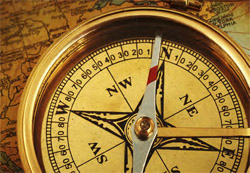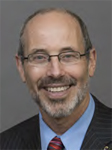Utilities In Search Of Direction, Look No Further

By Kevin Westerling,
@KevinOnWater
The Water Environment Federation (WEF) is harnessing both natural resources and human drive to lead an energy surge in the water sector. WEF President Ed McCormick discusses where the industry is headed and how utilities can stay ahead of the curve.
The water industry’s trajectory is like “a tidal wave taking off,” according to Ed McCormick, WEF’s 2014-2015 President of the Board of Trustees (passing the gavel in October). While tidal waves can elicit thoughts of dreaded storm surges, this proverbial tidal wave is a decidedly good thing. On the wastewater side in particular, it seems the industry is ready to embrace innovative, efficient, and sustainable solutions, in large part due to WEF’s guidance.
 In advance of the 2015 WEFTEC conference and as a victory lap for WEF’s accomplishments during his tenure, I asked McCormick about the key issues facing the industry going forward. After all, the WEFTEC program is designed to address such challenges, and the job of WEF president is to develop leadership strategies for the future.
In advance of the 2015 WEFTEC conference and as a victory lap for WEF’s accomplishments during his tenure, I asked McCormick about the key issues facing the industry going forward. After all, the WEFTEC program is designed to address such challenges, and the job of WEF president is to develop leadership strategies for the future.
His response was all over the map … and yet clear as can be.
Points Of Direction
Like the points on a compass, McCormick explained that the direction of the water/wastewater industry can be designated by the letters N, E, S, and W. But instead of North, East, South, and West, our areas of concern are Nutrients, Energy, Stormwater, and Water reuse.
And for each area of concern, WEF has mapped out a plan.
Nutrients: This year WEF is launching its Nutrient Roadmap to help utilities not only remove nitrogen and phosphorus from waste streams — thus protecting vulnerable waterways and reservoirs — but also capture and recycle them as fertilizer. Phosphorus, in particular, is an issue because it forms pipe-clogging struvite yet is an irreplaceable and finite resource for agriculture. “By removing that phosphorus, we solve an internal plant problem while making revenues at the other end, by selling the phosphorus,” said McCormick. “I would envision more and more of that happening.”
Energy: The forerunner to the Nutrient Roadmap was the Energy Roadmap, which didn’t come first by accident; at this juncture, using less energy is perhaps the most essential and accessible ingredient to successful treatment plant operations. The first step is energy management. “It’s easier to save a watt than to produce an additional watt,” McCormick noted.
Meanwhile, great strides are being made in energy recovery. “About 80 percent of the energy that comes to us in wastewater is thermal energy, versus about 20 percent [that is] chemical,” said McCormick, citing a recent study by WEF and the Water Environment Research Foundation (WERF). “Historically, our industry has gone after that 20 percent. There’s a lot of fertile ground for us to recover the heat from the wastewater. Depending on the time of year, our collection systems can be a heatsink in the summertime for cooling buildings and in the wintertime for heating buildings and anaerobic digestion.”
Stormwater: “Stormwater is big, and it’s becoming bigger,” said McCormick. Evidence of this fact can be seen in utility and regulatory focus on combined sewer and sanitary sewer overflows (CSOs and SSOs); massive, citywide green infrastructure plans (à la Philadelphia); and the annual Stormwater Congress, a tailored program within WEFTEC that gets larger each year. And, of course, because of storms.

“What used to be our 100-year storm seems to be happening all too frequently. When you have two or three ‘100-year’ storms in five years, what you’re realizing is that the data we’re using is not updated,” McCormick stated. “Whether it’s much less or much more precipitation, we’re experiencing more intense weather patterns.”
Water Reuse: If you speak with anyone from WEF, you won’t hear the term “wastewater treatment plant,” but you will hear “water resource recovery facility.” The shift in wording is a conscious effort to create cultural change — to expunge preconceived notions about the old WWTP and reset the way utilities, policymakers, and the public perceive these facilities, as WRRFs. It’s about creating energy from wastewater, saving and repurposing nutrients, and recycling water to bolster dwindling supply. The trend toward municipal water reuse is well underway but is nascent relative to its potential. To help advance adoption, WEF’s next “roadmap” will cover water reuse, according to McCormick.
No utility gets there alone, however. There are stepping stones to reach these points of sustainability.

"I don’t think we’ve had a renaissance like this one, a true sea-change in the industry, since the early ’70s — since the EPA was formed and the Clean Water Act was created."
Ed McCormick, president, Water Environment Federation (WEF)
Collaboration And Innovation
McCormick called collaboration a core value for WEF, asserting that “Competition doesn’t work effectively in the water sector. … What our members want is for the various water associations to come together in a unified way, not overlapping in their activities but each working to its strengths.”
While 98 percent of WEF members are located in North America, McCormick stressed the need to look overseas for collaboration and innovation.
Speaking on WEF’s newfound (or at least newly formalized) global policy, he stated the need to “bring the best the world has to offer — the most innovative, cutting-edge, cost-effective ideas — back to our members.”
But the U.S. has systemic roadblocks in place. McCormick cited the conservatism ingrained in the North American water sector, acknowledging that “Oftentimes it’s in our specifications.”
“As a requirement to bid on a job, you have to have at least x — three or five operating facilities — that have been in operation in North America for the past y years,” he related. “That’s a problem. When Europe has three operating facilities and there’s only one in North America, that should not be precluding you from becoming an innovation leader.”
Nothing a collective tidal wave of energy can’t overcome. Optimism still rules this day. “I don’t think we’ve had a renaissance like this one, a true sea-change in the industry, since the early ’70s — since the EPA was formed and the Clean Water Act was created. If you talk to your average water sector professional, they’re aware that things are changing in a big way,” said McCormick.
In this new era, he reminds us: “There really is no waste. There are only wasted resources.”
